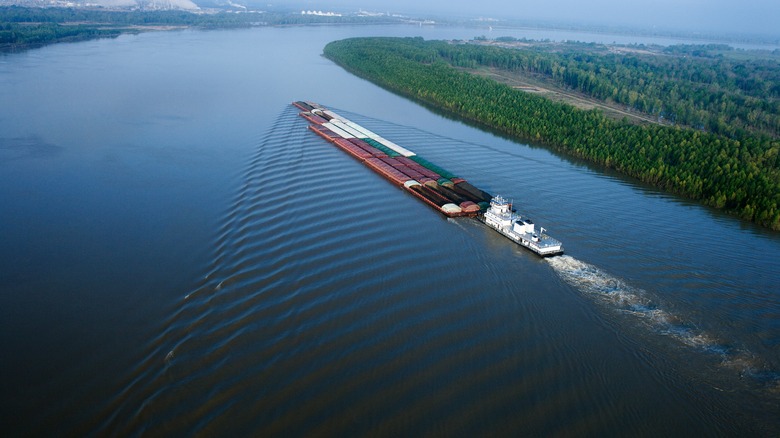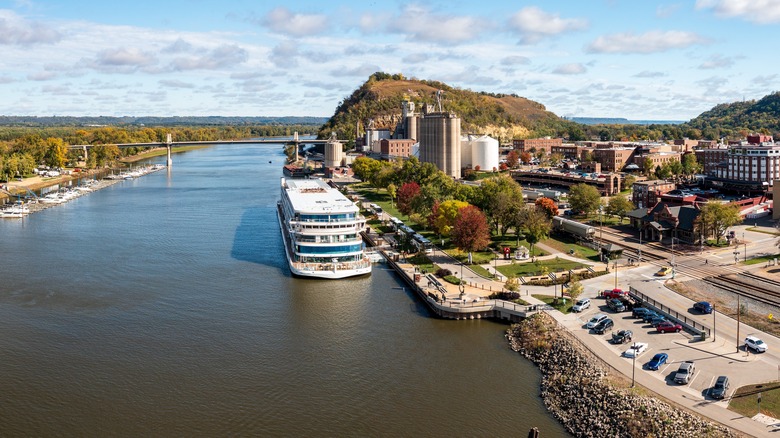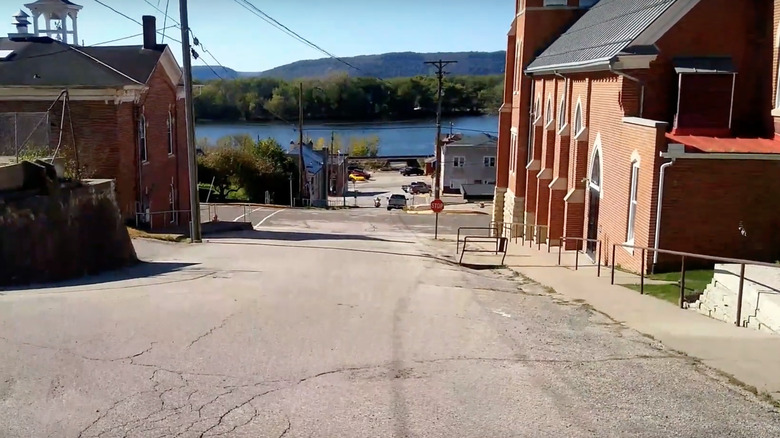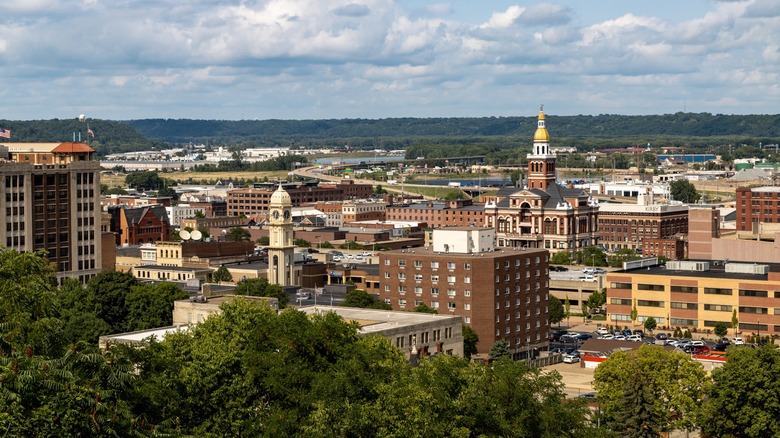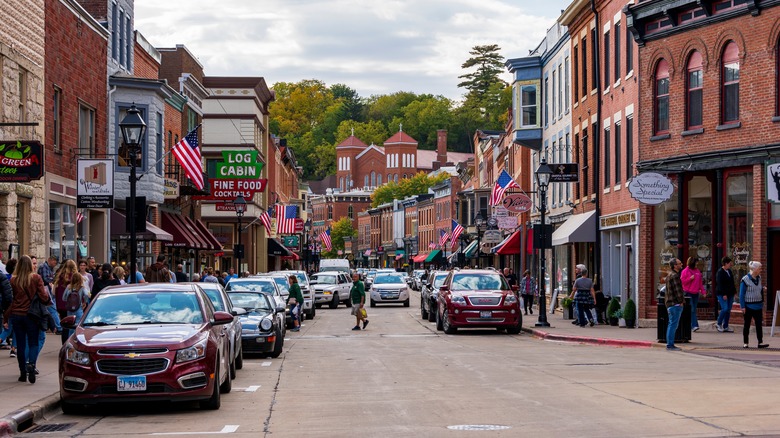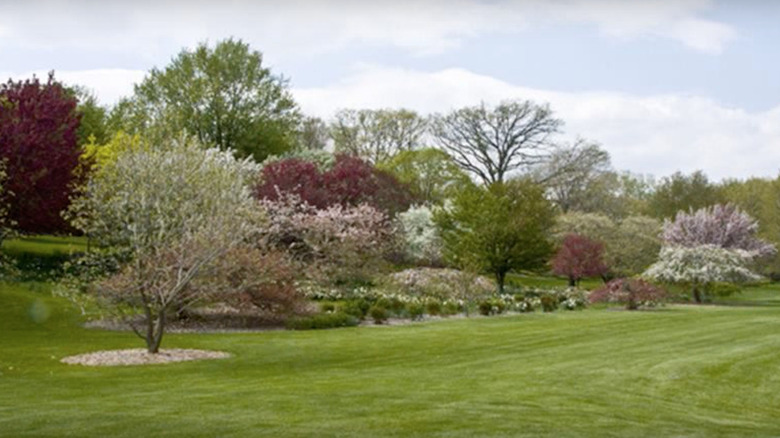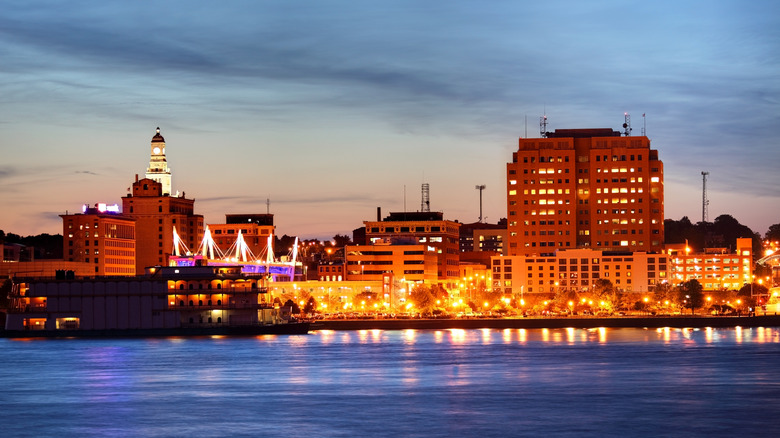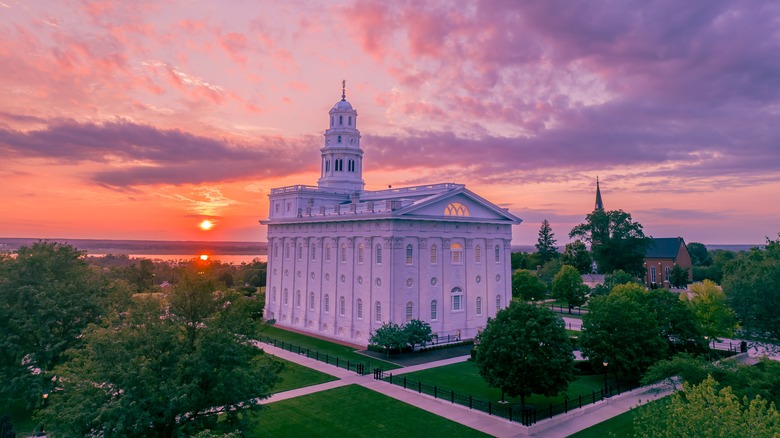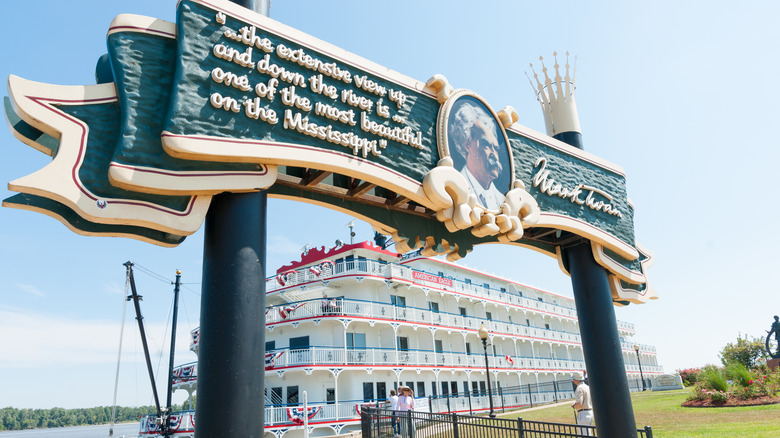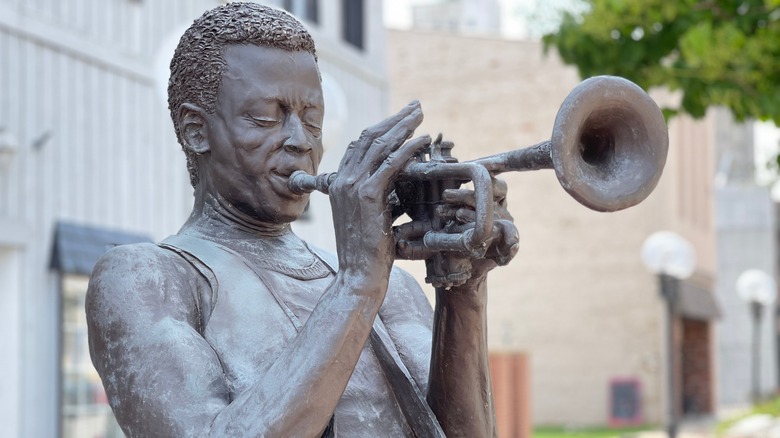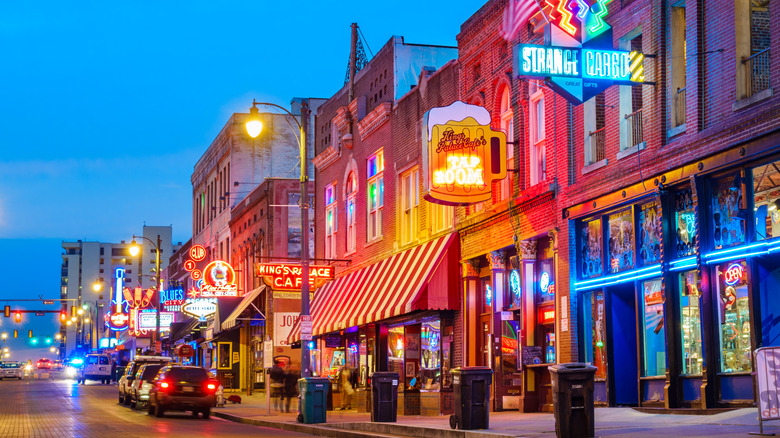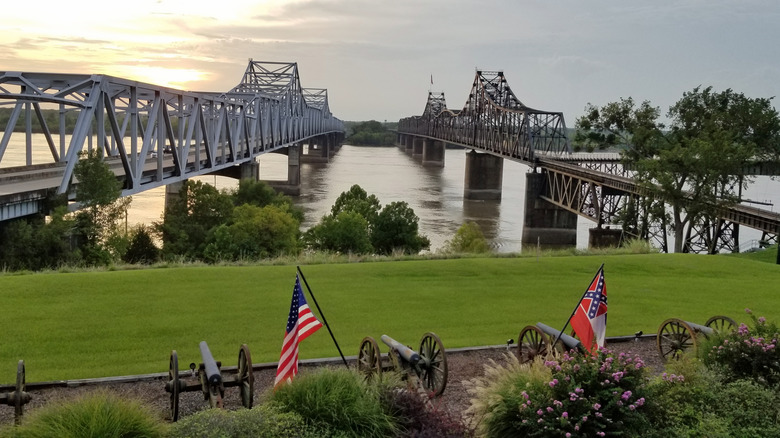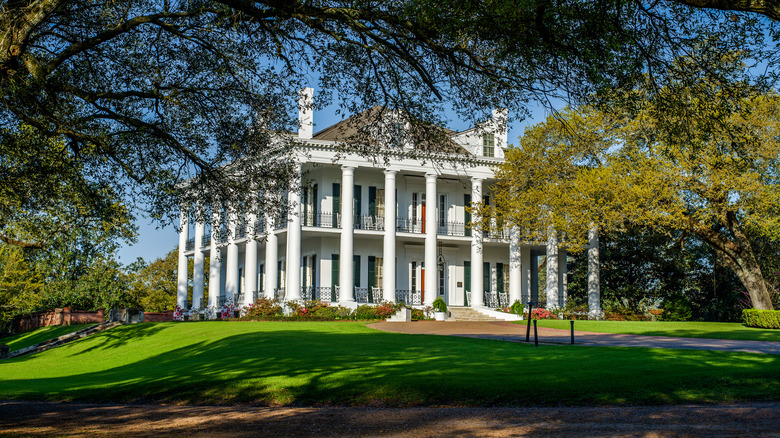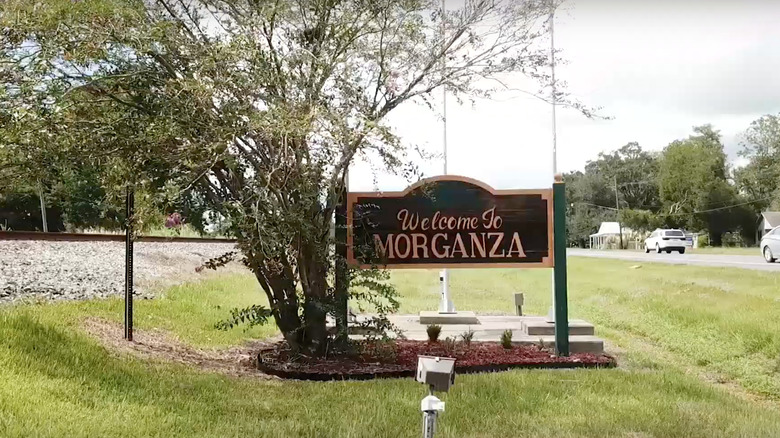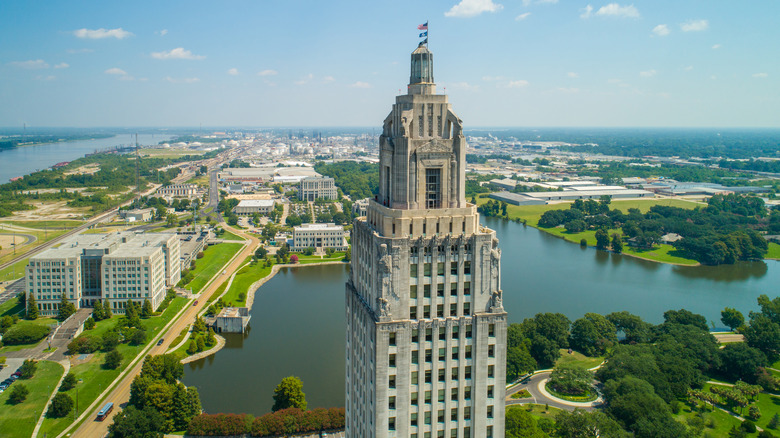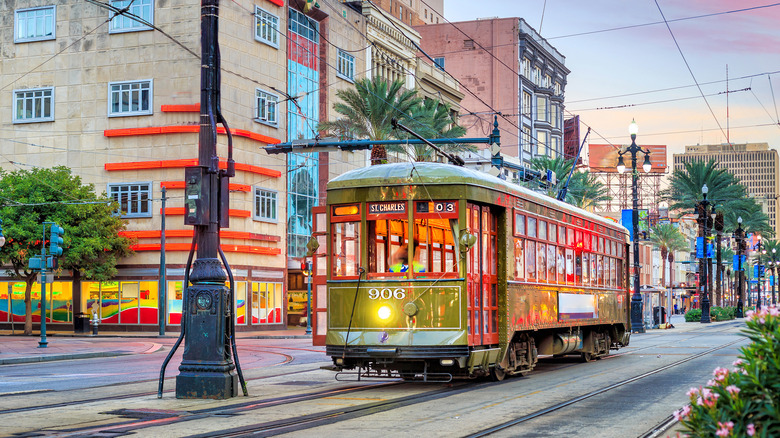The Best Riverfront Towns To Visit On The Mississippi River, According To Travelers
Just as South America has the Amazon, Africa houses the Nile, and Southeast Asia is where you can find the mighty Mekong, the Mississippi River is the artery that courses throughout the United States. It plays a key role in many facets of life there, from generating habitats crucial for birds, fish, and agricultural land to its importance as a means of transporting people and goods. While it flows almost the entire length of the country, starting in Minnesota's Lake Itasca and rippling for more than 2,300 miles before expelling into the Gulf of Mexico, it is only the second-longest river in the nation (the Missouri River is slightly longer).
The Mississippi is a waterway of great physical wonder and variety, at some points only 30 feet wide, in other areas spanning miles. Along its meandering route, villages, towns, and cities hug the riverfront, some little more than hamlets with a handful of residents, others fully fledged metropolises, and many are spots worthy of a visit. Scouring travel sites like TripAdvisor, Cruise Critic, and government tourism pages, we've come up with the best locations worth checking out, arranging them geographically from north to south — some familiar destinations, others under the radar.
Red Wing, Minnesota
An hour southeast of Minneapolis, this pretty, small town has an artsy ambiance. A good start is Red Wing Arts, a hub that combines a gallery space where local artists are celebrated alongside those from further afield with a pottery center and an on-site store that sells artist-produced gift items. The Sheldon Theatre is a gold mine of entertainment, with theatrical shows, ballet, circus performers, live music, and much more. You can find even more offerings staged at the Treasure Island Amphitheater.
You can experience the river in a variety of ways. During the warmer months, riverboats anchor at the waterfront Levee Park, allowing visitors to book overnight stays. A little to the north, travelers can enjoy the sight of the Red Wing Lock, a system used by numerous vessels daily. Adventurers have the option to appreciate its workings close up as they voyage through it on a kayak.
Fountain City, Wisconsin
Fountain City sits among bluffs that rise above the river, offering spectacular water views to visitors. Historically, this area was a hunting area for the Dakota, Sioux, and Chippewa, among other Native American tribes, while some years later, European farmers began to work the land. Originally called Holmes Landing, after the name of an early settler, it changed its moniker to Fountain City in the 1850s in honor of the springs nearby. It's a tiny place with less than 1,000 residents, and agriculture remains a key industry here.
The natural beauty is astounding, from rolling pastures to the forested ridges of hills, and is one of the main lures for travelers. Many come for the chance to kayak on the river from Merrick State Park or hit the back-country for snowmobiling in the winter. An enjoyable aspect is that increasingly elusive small-town feel, very much alive here, from the independent boutiques to the owner-run restaurants.
Dubuque, Iowa
When thinking of a steep railway, a town on the banks of the mighty Mississippi might not come to mind, but Dubuque proves that theory wrong. It is not a long ride and only costs a couple of dollars. Still, the Fenelon Place Elevator sometimes called the Fourth Street Elevator (it operates between these two streets), is billed as the planet's steepest and shortest scenic rail journey. It runs for less than 300 feet, but in that short span, riders will climb 189 vertical feet and, in the process, will enjoy striking views of the town and river while looking over Illinois, Iowa, and Wisconsin.
Travelers can experience more of the outdoors during hikes along the Heritage Trail, a marathon-length walking web that traces the route of a former railroad. Another attractive option is the Mines of Spain Recreation Area, set in woods south of the city, with more walking paths, fine river views, and ecosystems such as creeks, prairies, and wetlands — you might encounter wildlife like deer, wild turkey, and hawks.
Galena, Illinois
Galena sits just inland from the river, to the east of the waterway, but it appears on the list thanks to hiking trails that offer great Mississippi views. The town retains a pleasant, welcoming, old-world feel, thanks to Main Street, which dates to the 1800s and is filled with period buildings, independent shops, and restaurants. It's here that visitors can browse sweet treats at an old-fashioned candy shop, order a scoop at an ice-cream parlor, and find many other spots that are a refreshing departure from the cookie-cutter chain stores located all over the U.S.
Just outside Galena, Horseshoe Mound Preserve is a rewarding site to explore. Spread across about 200 acres, it features a network of hiking trails and a new viewpoint called Spiroff Overlook. Added in 2021, this perch is accessed via a path that passes oak trees before coming to an opening and supplies views of Galena, the Mississippi River, and the ridges of Iowa and Wisconsin. More great vistas are available from the bluffs and trails at Mississippi Palisades State Park.
Clinton, Iowa
For aspiring loggers or anyone interested in the history of the art of preparing wood, the Sawmill Museum in this Iowa riverfront town is a site that should not be missed. The museum traces the evolution of lumber production in Minnesota and Wisconsin. It shows how the wood is transformed into the items used for building houses and creating home furnishings. All facets of the chain are explored, from the loggers doing the heavy work to the titans of the industry that control the supply. Expect to see exhibits such as tools used in the cutting processes, interactive games showing how logs were floated downriver, and even vintage equipment from fire stations.
Living trees, shrubs, and other plants are the draw at Clinton's Bickelhaupt Arboretum, a 14-acre expanse with a butterfly area, rose displays, and many conifers. For river watchers, the views from Eagle Point Park take in a broad section of the Mississippi, and there are cross-country ski trails throughout the park in the winter.
Davenport, Iowa
For active visitors who want to combine exercise with some sightseeing, the riverfront LeClaire Park in Davenport has bike paths and walking trails and is a great way to get a handle on this city. Davenport is a lively destination with good performing arts, museums, and activities along the riverfront. The downtown set next to the Mississippi hosts yearly festivals celebrating trees, the blues, and art. Art is available year-round at the Figge Art Museum, housed in a modernist glass building designed by David Chipperfield, the famous British architect. European and American pieces form the backbone of the collection, with a growing trove of artwork from Haiti also on display.
For physical arts, productions at Adler Theatre include stand-up comedy, shows, music, and more, while the space — gold-leaf accents, crystal lighting, rich woods — is a work of art in itself. Mountain bikers will rejoice when they discover the tracks at Sunderbruch Park, with trails of all difficulties pushing through woods, over logs and roots, and down drops.
Nauvoo, Illinois
Nauvoo feels like a snapshot from another era, almost like a living museum; such is the sense of a bygone age captured so timelessly. Like many places in the United States, the area was first settled by Native Americans and later populated by Europeans. The town took off financially in the 1840s when the Mormon prophet Joseph Smith emptied the swamps and created a thrumming settlement named Nauvoo — a word identified as meaning "beautiful place" in Hebrew.
When the Mormons fled the area in 1846 due to persecution, Nauvoo was one of the largest cities in Illinois. Evidence of the wealth can be seen in the Nauvoo National Historic District, a large area with restored shops, houses (Brigham Young's among these), and even streets. Travelers can get more information on the history of Nauvoo at the visitor's center, museums, and during live demonstrations that honor the city's past.
Keokuk, Iowa
The colors, patterns, and formations inside geodes are hypnotizing, and they recall forces, reactions, and combinations of minerals that have occurred across distant tracts of time. Lovers of geodes will not want to pass by this town sitting a short distance south of Nauvoo on a bend in the Mississippi. This section of Iowa is a hotbed of geodes, and for those in the know, Keokuk Geodes have carved out a name for themselves, not only for the wealth of minerals found inside them but also for the shapes of the crystals within.
These geodes can range from a few inches in width to as large as a couple of feet, and hunters will find most within about 30 miles of the city. To get a glimpse of the richness of the geodes in this part of the country, stop by the Keokuk Area Convention & Tourism Office, where an extensive collection is on display. Keokuk also hosts an annual geode festival, the most recent one in September 2023. Keokuk also has other sights, from museums to locks to monuments dedicated to Native American elders.
Hannibal, Missouri
Samuel Langhorne Clemens might not be a household name, but his nom de plume, Mark Twain, will be more familiar to avid readers in America and beyond. Twain lived some of his early years in this Missouri town, and places in and around Hannibal informed his writing. This is a destination that celebrates the author's life in many ways. Travelers can stop by the Mark Twain Boyhood Home to see where he spent his formative years or the Interpretive Center, illustrating how Twain's friends become central characters in his books.
The interior is spectacular at the Mark Twain Cave, and its influence on "The Adventures of Tom Sawyer" will be evident to visitors. Performances of his books anchor the annual Twain on Main Festival, where period-costumed participants and era-specific dances and games add to the sense of celebration. And, for some riverine fun, enjoy dinner along with a cruise on the Mark Twain Riverboat, which plies the waters of the Mississippi.
Alton, Illinois
This eclectic destination, just northeast of St. Louis, Missouri, mixes history and popular culture. Alton can trace its roots to several industries, from mills that ground flour to large kilns where brick was fired, and the river was central to the town's growth and success. Today, industry isn't as widespread here, though boats are frequently seen navigating up and down the river. That said, plenty of other reasons attract visitors to this town. Abraham Lincoln uttered his renowned House Divided speech here in 1858, and his statue can be found in Lincoln-Douglas Square.
Other worthwhile statues to seek out are Robert Wadlow, the tallest man in the world for many years, and Miles Davis, the jazz trumpeter supreme — both of them were born here. Alton also has an Antique Row where old treasures sit, waiting to be discovered. Nearby, downtown is filled with cool bars, hip independent stores, exciting spots like pottery studios and cocktail lounges, and a pretty riverfront walk.
Memphis, Tennessee
Music runs through the DNA of this city. Memphis, after all, is where Elvis Presley, Isaac Hayes, and Johnny Cash, among others, spent time fine-tuning their craft. Fans of music worldwide descend on Beale Street to listen to live performances throughout the year, with bands playing in bars and clubs hoping to become the next big thing. Some museums explore and honor the rich music scene, and the Elvis Shrine of Graceland pulls visitors from all over the globe. But this riverfront city has much more to offer than its enviable roster of rhythm.
Deep historical context comes into sharp focus at the National Civil Rights Museum, located in the heart of the city. Memphis is also great for outdoor excursions with parks along the Mississippi. Shelby Farms Park is more than 4,000 acres in size, an urban refuge where locals congregate to go on long walks along the riverfront, hit the tarmac on a bike (travelers can rent bicycles), or even try out a ropes course, zip lines, and kayaking.
Vicksburg, Mississippi
History buffs will find plenty to keep them entertained in this city that was first inhabited at the beginning of the 18th century. Vicksburg was the site of a crucial moment in the Civil War when the Battle of Vicksburg was fought here in 1863. The Confederates surrendered after 47 days of siege, which significantly altered the war's progress in favor of the Union troops. Visitors can tour the site of that battle, now part of the Vicksburg National Military Park (one of the most-visited tourist attractions in the U.S.), while the heart of the city also features war relics visible through the Vicksburg Heritage Walking Trail.
Museums examine stories from the city's past, from Civil War tales at the Old Depot Museum to an in-depth look at one of the world's favorite drinks at the Biedenharn Coca-Cola Museum. Lovers of visual gems will enjoy poring over the murals by the river along Levee Street, some of which recount the city's history, wandering around galleries that showcase Southern art, or touring the city's historic homes.
Natchez, Mississippi
The river is a defining part of this city, and travelers can take in a sublime view of the waterway from Bluff Park. Time the visit for sunset, since the park faces west, over the river. The Natchez Trace Parkway, which has Natchez at one end, allows cyclists to burn off calories, while lakes that flank the areas around the river pull in the boating and fishing crowds. The varied ecosystems here are also a magnet for avian life, and birdwatchers will find lots to spot.
A little east of Natchez, Homochitto National Forest is a hiker's dream, with trails that cross creeks and slide through dense woods. Then, as the temperatures rise, walkers can cool off at a lake. The city also boasts a rich history, with the Dr. John Bowman Banks Museum looking at the life of the city's first Black doctor (it was also a center for the NAACP in the 1960s); other museums shine a light on Native American tribes, slavery, and daily life in this Southern belle.
Morganza, Louisiana
For history buffs, this place is a real undiscovered gem. The town's name comes from an early plantation anchored by the antebellum home of Charles Morgan. Having moved here from New Jersey, Morgan worked as a surveyor and later traded enslaved people, though, in time, his house was destroyed — but the town name stuck. During the Civil War, a vast massing of Union soldiers occurred here, 40,000 of them by some estimates, and many were involved in a battle at Sterling's Plantation.
The battle marked a victory for the Confederates, but the retreating Union army set the town on fire. Historical markers are dotted around the village, recounting the history and stories that shaped Morganza or supplying details on a typical Creole plantation home. At the same time, significant signs in the region identify sites that played a part in the Civil War. These include the locations of specific battles and skirmishes and the birthplace of a general who served in World War I.
Baton Rouge, Louisiana
Louisiana's capital brims with history, culture, and food. Several museums stand out, from the Louisiana Art and Science Museum (the Planet Tower, bathed in natural light, is a big hit with kids) to the Capitol Park Museum, which looks at developments throughout the state. For visitors on a budget, the first Sunday of every month is when many museums in the city forego their admission charge, making entry free.
Gourmands will want to sample some gumbo here, a hearty meat, vegetable, and seafood stew that is a local specialty and is the primary pull of spots like Dempsey's and Louisiana Lagniappe. Arts and culture are well represented, from small and large galleries to free concerts at the Perkins Rowe Plaza. Free festivals throughout the year, from blues events to a celebration of lights, ensure you don't have to drain your bank account to have a good time in Baton Rouge.
New Orleans, Louisiana
One of the most unique cities in the country, N'Awlins is mysterious, sensual, and never dull. For fans of the river and shopping, Riverwalk Outlets presents the perfect option: an outlet center right on the Mississippi and in the center of town. New Orleans has no shortage of things to do and sites to see. The French Quarter can be crowded and tacky, but it's also home to some gorgeous architecture, and if you time your visit right, it can be quiet and cinematically moody.
The city stages shows, and, in the spring, music festivals start to pop up — the French Quarter Festival celebrates the sights and sounds of Louisiana and is held in April. One of the greatest joys of visiting New Orleans is to wander, see the antebellum mansions, and witness how much the city changes from block to block. And no visit would be complete without sampling a beignet or a po'boy and taking a ride on a street car.
